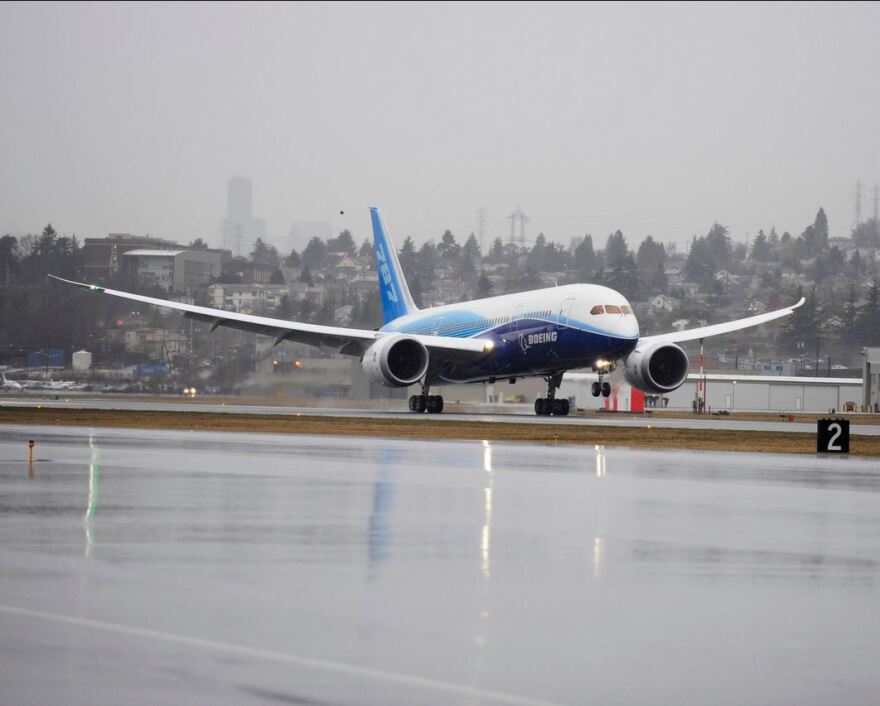Five years ago this Monday, Boeing's 787 flew for the first time. The Dreamliner, billed as Boeing's game-changing plane, roared into the sky above Everett at 10:27 a.m.
Now another milestone approaches: Boeing says 2015 is the year it makes its first profit per plane on the 787 line.
Until now, Dreamliners have sold at a loss, so this will be a turning point for a program that has suffered a lot of bad news since its start.
The plane was launched with a lot of fanfare. With a high ceiling, large windows and a soothing lighting system, the plane was to be comfortable for passengers. But the fuel efficiency made it a real winner: the smooth, light carbon-composite fuselage and the electric systems powered by lithium-ion batteries instead of heavy motors.
“This plane has two different sets of innovation involved with it,” said Bob Bumpous, a Museum of Flight docent and one of the engineers who did early work on the 787. "One is the engineering. The other one is the manufacturing process. Two radical things going on at the same time, and they interact with each other."
One of the big changes Boeing made with the 787 was sourcing key components of the new plane to outside firms. It was supposed to cut costs and speed production. Instead it's part of why Boeing has spent $25.2 billion building 787s – money it hasn't gotten back from selling them. And the investment community has been asking how much more Boeing might have to spend before the program as a whole starts to turn profitable.
“Will they ever deliver everything that they had set for themselves initially on the 787?” said Michel Merluzeau, an aerospace analyst at G2 Solutions. “Perhaps not. But don’t take the narrow view. You've got to look at the way the knowledge, things learned lessons learned on 787 are being re-injected. Those types of program become new standards that benefits the entire enterprise. ”
Many of the innovations made with the 787 are finding a place in the company’s new 737s and 777s.
And the company says the right size of plane coupled with the capacity to fly far on a tank of fuel opens up new direct routes for the traveling public: Denver to Tokyo, Stockholm to Oakland and Toronto to Delhi.
“When you think London Heathrow to Austin, Texas, is a reality,” said Boeing spokesman Doug Alder. “That’s something we never planned for but yet it’s happening.”
Despite Washington’s loss of a second 787 production line to South Carolina, the 787 has helped Boeing grow its employment here. SPEEA engineers say their ranks are up 40 percent since 2003, when Washington won the first 787 production line. The Machinists union says its Boeing membership has doubled since then.
Merluzeau says the 787 was Boeing’s response to the challenge from its rival Airbus, and it remains key to Boeing's future. “It positions The Boeing Company to be competitive and to be in the lead for the next 30 or 40 years as an aircraft manufacturer,” he said.


